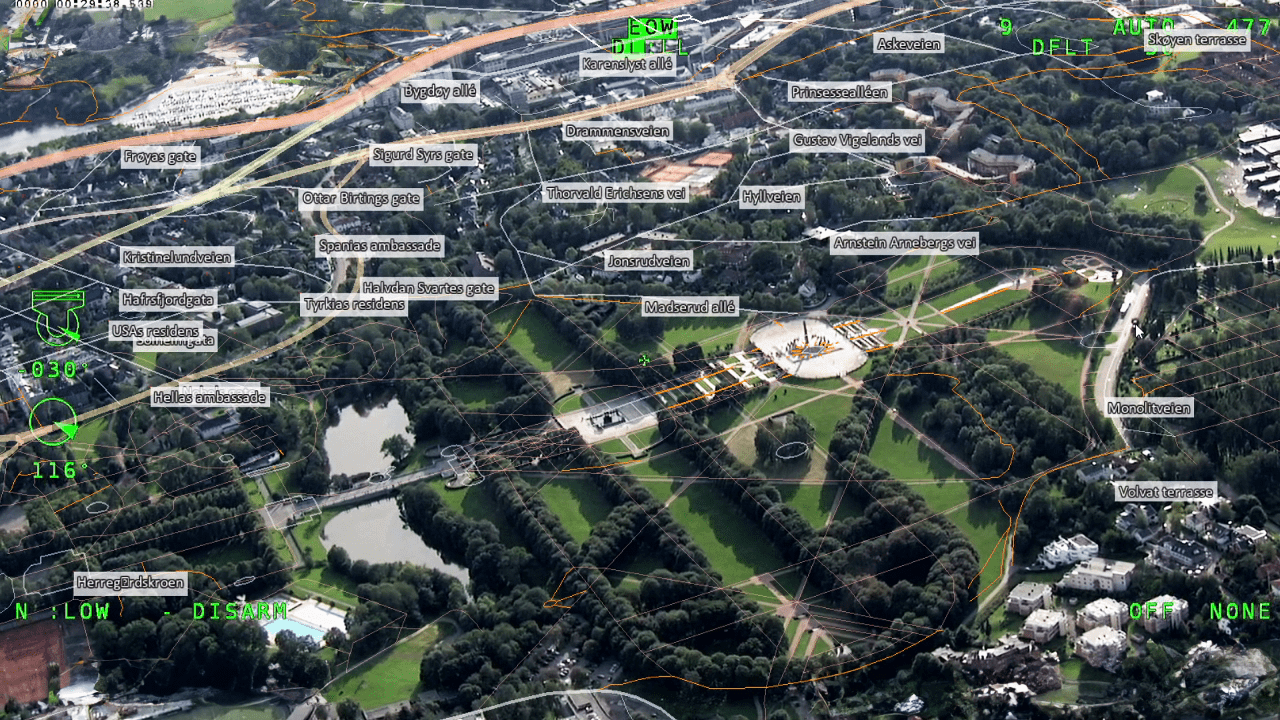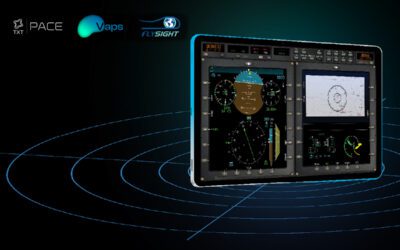Published on GA BUYER ONLINE – AvBuyer.com – issue march 2024, with dissemination at HAI HELI-EXPO 2024
In the world of aerial surveillance, Electro-Optical Sensors (or EO sensors) are at the heart of most operations. Indeed, their use across many different applications makes EO sensors a critical integral component of both basic and the most sophisticated technology. An electro-optical sensor is as vital to optical operations as a transistor is to a radio.
This article will examine exactly what an EO sensor is, the different types of EO and EO IP sensors, and their applications in surveillance, particularly airborne operations. We’ll examine the use of EO sensors in both military and civilian applications and how these components can be integrated into a far more advanced data analysis system such as FlySight’s OPENSIGHT platform.
What is an EO Sensor?
Let’s begin our analysis with an in-depth look at the definition, operation and function of an EO sensor.
An electro-optical sensor is an electronic detector that can convert light or the variations in light, such as shadows or different ranges in the light spectrum, into electronic signals. EO sensors can be calibrated to sense EM radiation from infrared through to ultraviolet wavelengths, allowing them to operate in low-light-level conditions. This makes them especially useful for nighttime aerial operations, particularly optical infrared sensors.
In the civilian world, most people are likely to encounter EO sensors in appliances such as lights that are activated once the light level falls below a specific trigger point or alarm systems that trigger when a light beam is interrupted by an object or person.
They carry out this function by measuring the physical qualities of light and converting it into electronic data. In short, they can help an operator see more and in a wider variety of wavelengths than the human eye is capable of. This in itself explains why law enforcement, Search & Rescue and military operators rely so heavily on EO sensor technology.
How do EO sensors work?
EO sensors do not operate autonomously. They have to be a part of a larger surveillance system because the electronic data gathered by the sensor must be analysed and interpreted using algorithms and, ultimately, a human operator.
Generally, an EO sensor has an infrared LED and a light receiver. The light from the LED is directed into a prism, which then reflects it into the receiver. This receiver detects minute changes in the amount of light captured, which then actuates electronic switches within the unit. Effectively, light acts as a photoelectric trigger to increase or decrease the electrical output of the receiver.
The four different types of EO sensors
EO sensors are divided into four distinct types, each with specific operating parameters.
Photoconductive devices – the most basic of EO sensors carry out the fundamental operation of converting changes of light into a different resistance within a sensor to trigger a response.
Photovoltaics – most commonly known as solar cells – are primarily used in domestic applications to convert sunlight into an output voltage. However, these cells also have applications within military operations, especially in locations where mains electricity is non-existent.
Photodiodes – These small and sensitive diodes convert incident light into output current and are often incorporated into motion sensor equipment.
Phototransistors – these bipolar transistors have base collectors that are exposed to light and react in a similar way as photodiodes. The amount of internal gain can often be adjusted for accuracy, making them the basis of most EO sensor surveillance equipment.
Benefits and limitations of EO sensors
The advantages of electro-optical cameras and EO sensors are multi-faceted, but like everything, they have limitations. The key benefits of electro-optical sensors include:
- Sensitivity – EO sensors are highly sensitive and, therefore, incredibly accurate, with the ability to be calibrated to sense specific wavelengths
- Versatility – EO sensors can be easily integrated into data analytics systems, producing real-time information within wide parameters.
- Compact – these types of sensors are very small and lightweight, making them ideal for aerial applications in particular.
- A wide dynamic range – their range is considerable, again making them particularly useful in aerial platforms such as onboard helicopters or at sea.
- Impervious to EM interference – in military applications in particular, the use of electromagnetic interference can render some equipment useless. EO sensors are not susceptible to EM interference, preventing hostile combatants from using EM jamming equipment to ‘blind’ the sensors.
- Chemically inert – as they do not react with their surroundings, they are far more stable and, again, accurate.
The limitations of EO sensors are really only confined to their cost (which, thanks to better production methods, is coming down) and their vulnerability to interference from environmental factors such as extreme weather and physical damage. However, this can be negated to an extent by incorporating more robust housing to protect the sensor in electro-optical cameras against any adverse conditions, such as extreme changes in temperature.
The military and applications of EO sensors
While there are myriad civilian applications, it’s in the military theatre that EO sensors really come into their own. These accurate, reliable sensors act as ‘eyes’ for enhancing situational awareness in mission-critical situations, both in aerial platforms and satellite sensors. The military uses of EO sensors draw from four key types:
- Nonlinear crystals – these on-chip solutions enhance multi-functionality and multi-wavelength sensitivity, giving greater ability to detect threat targets and provide greater IR countermeasures. In civilian applications, nonlinear crystals are most commonly found in the medical field for laser surgery technology and x-ray generation.
- Advanced Smart sensors – utilising mission-specific algorithms that can be adapted to various theatres, multi-domain processing algorithms give EO sensors the ability to adapt to fluid situations. They are small enough to create multi-spectral and multi-wavelength seekers, allowing units to easily identify targets in complex terrain.
- Advanced lasers – lasers allow for far more accurate targeting and remote sensing. While laser technology is still in the relatively early stages of development compared to other fields, the advancements in compact lasers push the boundaries of current surveillance equipment. With the help of compact EO sensors, this area is set to develop much further in the next few years.
Many current applications for EO sensors can be found in advanced fighters such as the F-35, which utilises a distributed aperture system (DAS) to give pilots a 360° awareness sphere that can warn them of incoming missile threats.
Other real-world applications include infrared countermeasure systems that can prevent homing missiles from locking onto an aircraft’s heat signature. On the ground, EO sensors are enabling equipment to make target recognition, identification and location easier for more precise directed fire support, using a ‘digitised battlefield’ rendering to allow a human operator to acquire, locate and identify high-value targets, even from an operating base thousands of miles from the target zone.
As the field of EO sensors moves forward and miniaturisation makes the equipment even smaller, handheld versions of the larger targeting equipment are becoming more prevalent, giving users high-definition images that are accurate even over an extended range.
The future of EO sensors – where next?
As well as moving into other fields, such as metrology and the energy industry, EO sensors have a role to play in future military hardware, too. The most significant advancement is the development of Microoptoelectromechanical systems (MOEMS), also referred to as optical MEMS. Optical MEMS are the next generation of integrated systems, incorporating not just the most advanced EO sensors but also mechanical and electrical systems that manipulate optical signals at the molecular level.
The greater accuracy of these optical MEMS is of particular interest to military users and could ensure a much higher mission success rate even in extremely hostile theatres. Recent breakthroughs in optical sensors that mimic the human eye could also be a step forward for advanced and more practical uses of AI within a vast range of applications, from the nuclear power industry to logistics, analytics and security systems.
Without EO sensors, much of the equipment we have today would be inoperable. As miniaturisation has the potential to reduce the size of sensors down to the nano level without compromising their effectiveness, reliability or resolution, their use in drone technology (and drone swarms in particular) is also an area of considerable interest.

OPENSIGHT Augmented Reality System Improves awareness situation in an avionic operation
How do EO sensors fit into FlySight’s OPENSIGHT system?
Electro-optical sensors are ideal for multi-platform PED systems such as FlySight’s innovative OPENSIGHT system. This processing, exploitation and dissemination system has been tried and tested in multiple arenas, air and both on land and at sea, enabling operators to make more effective decisions based on accurate and real-time data gathering. The toolbox includes several turnkey applications that utilise the latest EO sensor technology, data fusion and add hyperspectral analysis capabilities and Augmented Reality support.
Developed following the STANAG guidelines and rules, OPENSIGHT has been in operation for over a decade, creating interfacing software tools for airborne data sensors. Part of that package includes the ability to analyse and interpret data gathered using advanced EO sensors.
In a modern military context, OPENSIGHT is the perfect package for use alongside the most advanced EO sensor equipment fitted in airborne and water-based platforms. Not only does it provide AI processing advances, but it can fully integrate into existing systems. This makes it intuitive and easy to use and reduces training time as operators are already familiar with the technology used.
The inclusion of AI intelligence processing (alongside human assessors) and the constant ability for OPENSIGHT to ‘learn on the job’ thanks to machine learning means that sensor data can be constantly updated and background ‘noise’ effectively eliminated for a more accurate and precise target acquisition process.
This makes an EO sensor package that can integrates with OPENSIGHT an advantage on the battlefield, and its uses can also be expanded to the civilian market in such applications as search and rescue and law enforcement.
You can learn more about FlySight’s OPENSIGHT Mission Console at flysight.it or contact the FlySight expert team directly for further information.





